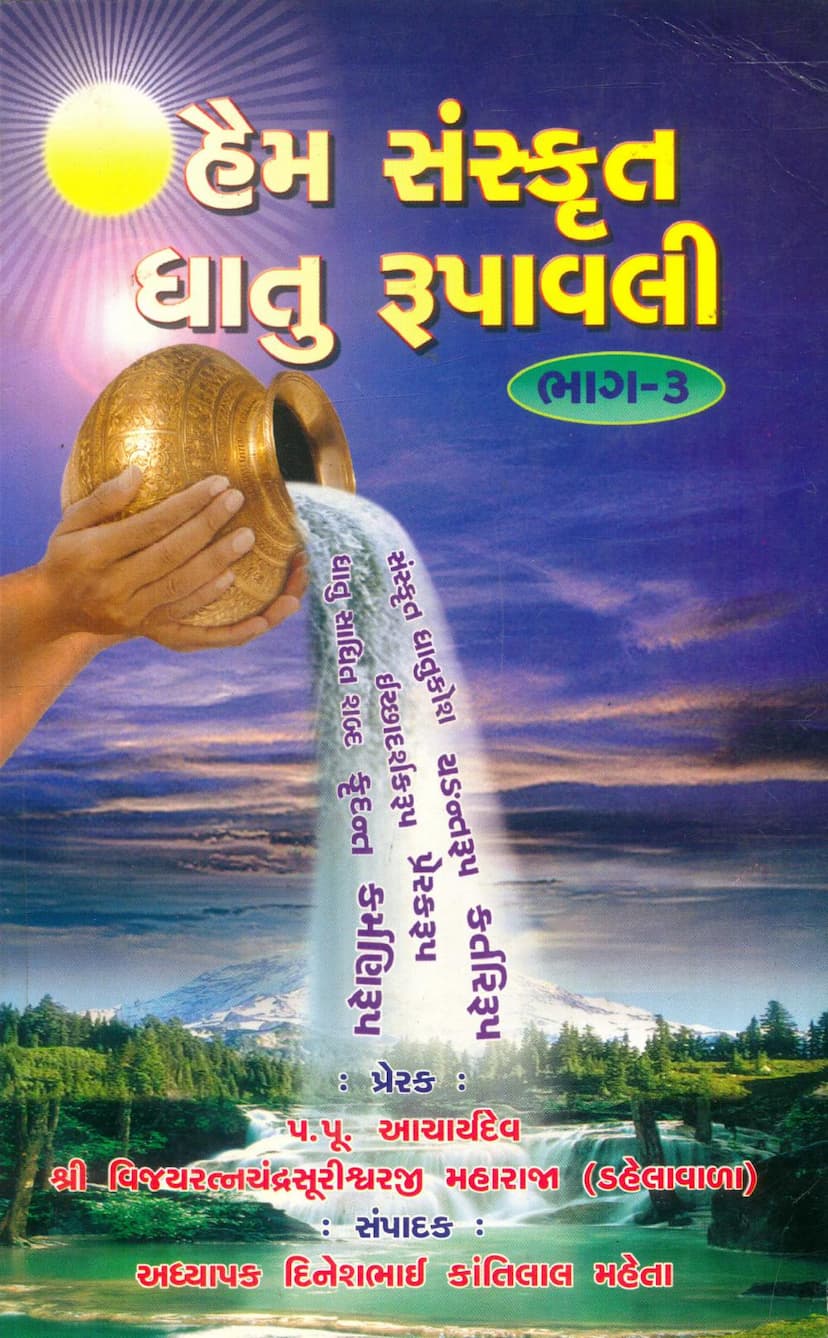Haim Sanskrit Dhatu Rupavali Part 03
Added to library: September 1, 2025

Summary
This Jain Sanskrit text, "Haim Sanskrit Dhatu Rupavali Part 03" by Dineshchandra Kantilal Mehta, published by Ramsurishwarji Jain Sanskrit Pathshala, is the third volume in a series dedicated to the study of Sanskrit verb roots (dhatus) according to the Haim Grammar tradition.
Here's a comprehensive summary of its content and purpose:
Core Subject:
- Sanskrit Verb Roots (Dhatu Rupavali): The primary focus of this book is to provide a systematic and comprehensive presentation of the conjugations (rupavali) of Sanskrit verb roots based on the Haim Vyakarana, authored by the renowned Jain Acharya Hemchandracharya. This specific volume, Part 3, appears to cover specific groups of verb roots, as indicated by references to the 5th, 8th, 9th, 7th, and 2nd ganas (verb classes).
Content and Structure:
The book aims to present the various forms derived from Sanskrit verb roots, categorized by:
- Dhatu Sadhita Shabda (Word formations derived from roots): This likely includes nouns and other word types formed from verb roots.
- Kridanta (Participles): Forms derived from roots that function as adjectives or nouns, indicating action or state.
- Karmani Rup (Passive Voice Forms): Conjugations in the passive voice.
- Ichchhadarshak Rup (Desiderative Forms): Forms indicating a desire or wish for an action.
- Prerak Rup (Causative Forms): Forms indicating that someone causes another to perform an action.
- Samakrit Dhatu Kosh (Sanskrit Dhatu Glossary): A lexicon of Sanskrit roots, likely with their meanings.
- Chartara Rup (Tense Forms): Various tense conjugations of the roots.
- Meaning (Artha): The meanings of the verb roots are provided.
Purpose and Significance:
- Aid to Sanskrit Study: The book is intended as a valuable resource for students and scholars of Sanskrit, particularly those following the Haim Grammar tradition. It aims to simplify the complex task of learning Sanskrit verb conjugations.
- Preservation of Jain Tradition: By focusing on Haim Grammar, the book contributes to the preservation and dissemination of a significant grammatical tradition within Jainism, which has a rich heritage of Sanskrit scholarship.
- Educational Tool: The detailed presentation of verb forms serves as an essential educational tool for understanding the structure and nuances of Sanskrit verbs, which are foundational to religious texts, literature, and philosophy.
- Second Edition: The book is a second edition, indicating its popularity and usefulness, and suggesting improvements or corrections from the first edition.
- Spiritual Goal: The preface and blessings often emphasize the ultimate goal of using language knowledge for spiritual upliftment, leading to understanding of principles (tattva) and ultimately liberation (moksha).
Key Figures and Support:
- Author: Dineshchandra Kantilal Mehta is credited as the editor, and Hardik Dineshbhai Mehta as the compiler.
- Publisher: Acharya Vijay Ramasurishwarji Tattvadnyan Sanskrit Pathshala, with additional support from Shri Ratnodaya Charitable Trust.
- Blessings and Inspiration: The book benefits from the divine blessings and guidance of prominent Jain Acharyas, including Acharya Shri Vijayaramasurishwarji Maharaj, Acharya Shri Vijay Abhaydevsurishwarji Maharaj, and Acharya Shri Vijayratnachandrasurishwarji Maharaj. These figures represent important lineages within Jain monastic traditions (Tapa Gachha).
Overall:
"Haim Sanskrit Dhatu Rupavali Part 03" is a scholarly and devotional work aimed at making the study of Sanskrit verb forms accessible and systematic within the Jain spiritual and educational framework. It provides a structured approach to mastering a crucial aspect of Sanskrit grammar, thereby facilitating deeper understanding of Jain philosophical and religious literature. The book emphasizes accuracy and clarity, acknowledging the ongoing nature of linguistic scholarship.